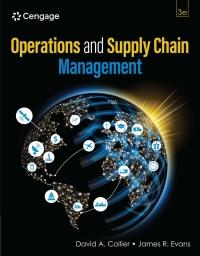On January 12, 2010, a major earthquake hit Haiti and the Dominican Republic. The epicenter of the
Question:
On January 12, 2010, a major earthquake hit Haiti and the Dominican Republic. The epicenter of the quake was 25 kilometers southwest of the Haitian capital of Port-au-Prince and only 13 kilometers below the surface. It registered a magnitude of 7.0, with aftershocks of 5.0 to 5.9. The shallow temblor increased shaking at the surface. Although an exact death toll proved elusive, estimates ranged from 200,000 to 300,000 people. The International Red Cross provided water, food, shelter, and medical services to the victims of 2010 Haitian earthquake. In past weeks of the disaster, they arrived by plane and ship. In the four years after the quake, the American Red Cross spent almost \($500\) million on relief efforts in Haiti and surrounding areas. Angelo Cardenas oversaw relief and recovery efforts for the 2010 Haiti earthquake. He earned his business degree from the University of Mumbai and had traveled the world as an International Red Cross field coordinator. Cardenas wanted an estimate of how fast he can provide a single air cargo pallet of mixed supplies to the Haiti people. The supplies include food, water, blankets, tents, and medical supplies, and are bundled on pallets. The cost estimates include the cost of the materials, collection, assembly, shrink wrapping, and getting the paperwork ready for shipment. He planned to use the critical path method using the information on the project shown in Exhibit 20.6. He defined assembling one air cargo pallet as a single project.

Case Questions for Discussion:
1.Draw the project network diagram and determine the normal time to complete the project, activity slack times, the critical path(s), and total project costs (i.e., baseline your project) using Critical Path Method.
2.Determine the best way to crash the project to complete the project and pallet as soon as possible at minimum cost with revised activity slack times, critical path(s), and total project costs. Provide reasoning as to how crashing decisions were made.
3.Select one work task in this supply chain such as loading or unloading air cargo planes or collecting blankets from a pre-positioned relief warehouse, and briefly explain how you would make that specific work task more resilient to ensure supply chain continuity?
Step by Step Answer:

Operations And Supply Chain Management
ISBN: 9780357901649
3rd Edition
Authors: David A. Collier; James Evans




